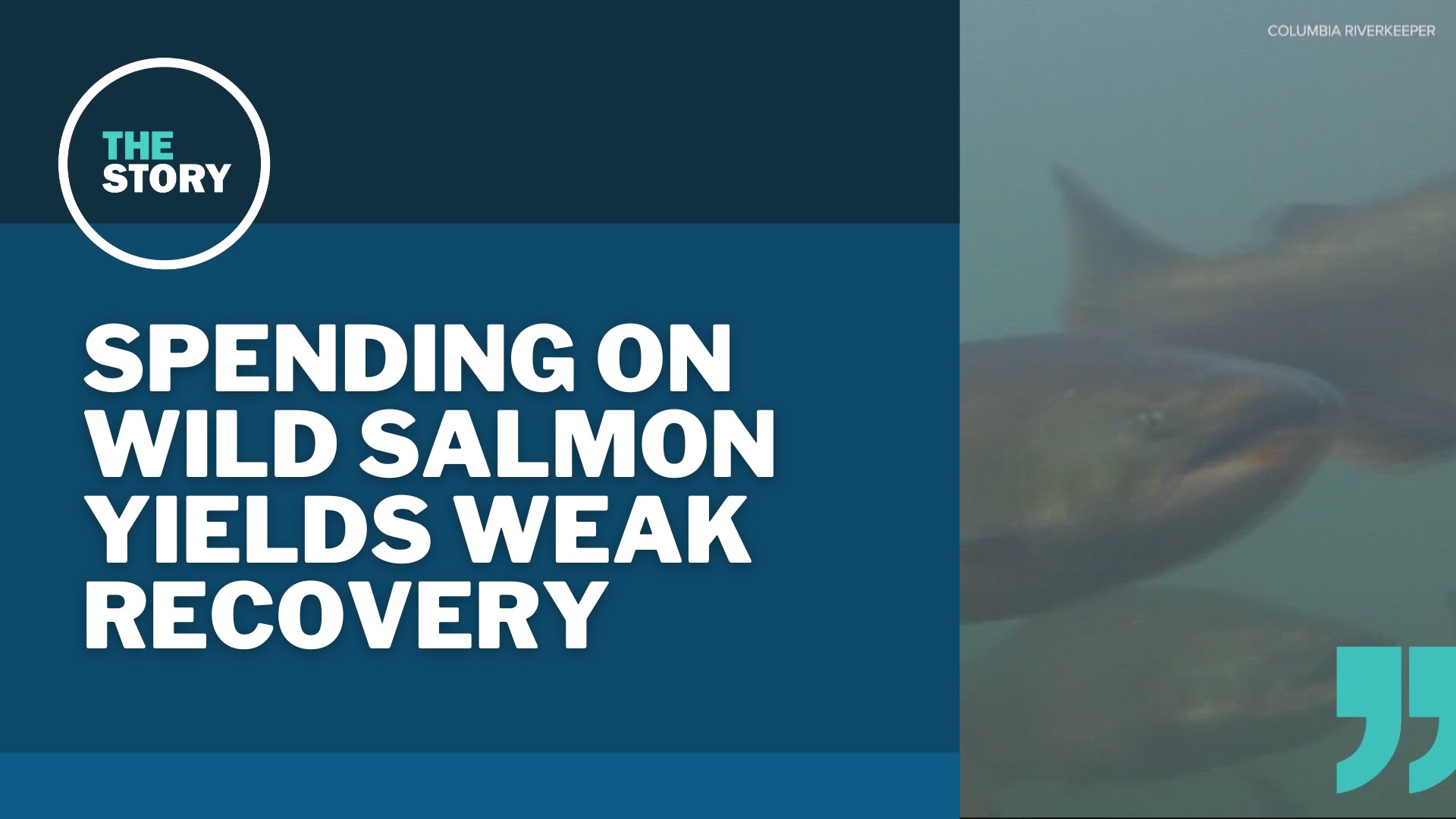CORVALLIS, Ore. —
Over the last four decades, federal, state and local governments have doled out roughly $9 billion to help imperiled salmon species in the Columbia River Basin. Hundreds of projects — from habitat restoration to bounty programs on other fish that prey on salmon — have taken place.
But a new study from Oregon State University has found that all of that cash and effort has produced few discernible results.
“For a long time, there have been questions about the effectiveness of a wide range of activities taken to try to restore salmon and steelhead in the Columbia River Basin,” said Bill Jaeger, co-author of the study and applied economics professor at the university. “We do not find evidence of an increase in wild fish.”
For his research, which was recently published in the academic journal PLOS One, Jaeger looked at 50 years of salmon return data from the Bonneville Dam, the lowest dam on the Columbia River.
Before the dams went up, as many as 16 million salmonids returned to their spawning grounds in the basin every year. By the 2010s, an average of only 1.5 million fish returned past the Bonneville Dam.
The obstacles facing the fish aren’t just the dams, though. Jaeger noted that salmon are facing pressure from what he called “the four H’s.”
“Hydro, habitat, harvest and hatcheries,” he said.
Dams block the fish from swimming upriver. If and when they get there, they often find habitat that has been degraded by mining, logging and other development. Wild salmon are fished by commercial and recreational fishermen and they often are forced to compete with other fish raised in hatcheries.
Taken together, those factors have caused steep declines in coho, chinook, sockeye and steelhead populations. Jaeger said.
“Many of those species listed since the 1990s under the Endangered Species Act are ones for which the numbers have declined and continue to be of great concern,” he said.
Jaeger said that many conservation projects have been focused on what he called the “path of least resistance,” projects like planting vegetation along streams or paying anglers to catch Northern Pikeminnow, a nuisance fish that preys on juvenile salmonids.
“It's easier to implement those policies in terms of paying people to do things or giving resources to people to do things,” Jaeger said.
But less attention has been paid to how cost-effective those projects are. Jaeger has been on the side of this issue as an advisor to the Northwest Power and Conservation Council, a regional organization that seeks to find a balance between environmental and energy needs.
“Cost effectiveness was a term that was occasionally used in a report but was never really undertaken as a serious methodology for determining where to spend money,” he said. “The operations and the administration of these projects could have done a lot more to do serious cost-effective analysis to determine which of these activities seems to be generating more bang for the buck.”
So was all that money — $9 billion in inflation-adjusted taxpayer dollars — just wasted?
Jaeger said he doesn’t think that’s the right question to be asking.
“I'm not sure how useful it is to talk about whether the money was wasted or not,” he said. “That's behind us. I think what one can do, and what one should do, is look at this evidence and ask 'what should we be doing differently going forward?'”
KGW contacted the Bonneville Power Administration, which oversees much of the federal money spent on wild salmon conservation, and the National Oceanic and Atmospheric Administration, which is the lead agency on wild salmon recovery.
Spokespeople from both agencies said they would be unable to comment on the specific findings of the study, but officials with the power administration sent a statement acknowledging that salmon recovery was a problem, but noting that it was not the dams alone that were causing salmon declines.
For NOAA’s part, a spokesman pointed to a 2022 report from the agency that, for the first time, recommended breaching the dams on the Lower Snake River.
Jaeger said it’s exactly those kinds of tough decisions, which will face stiff opposition, that need to be the focus of policymakers for future spending.
“I think they need to be clear-eyed and look at all the options and think seriously about which ones are going to be the most cost effective,” he said. “Even if it means more pushback from stakeholders.”

